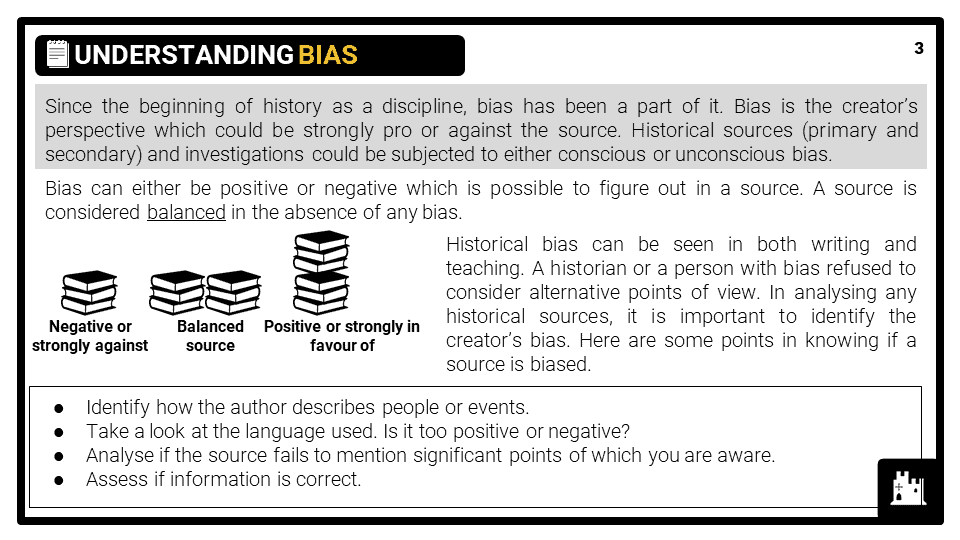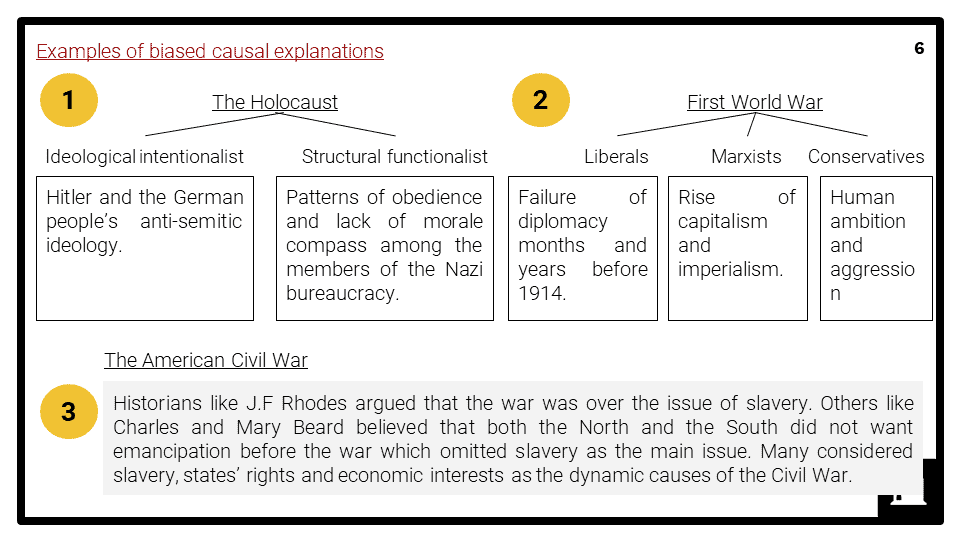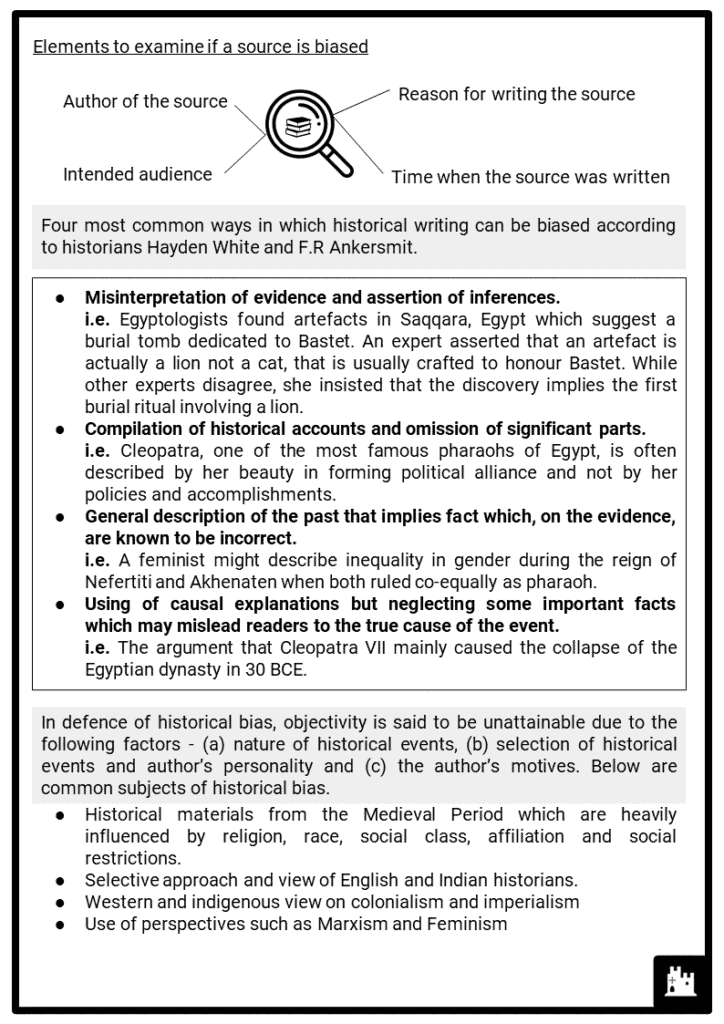Download Historical Key Skills: Understanding Bias
Do you want to save dozens of hours in time? Get your evenings and weekends back?
Our worksheet bundle includes a presentation and printable worksheets. Perfect for both the classroom and homeschooling!
Understanding Bias
This resource covers the concept of HISTORICAL BIAS as used in several topics, including:
- Ancient Egypt
- The Holocaust
- First World War
- American Civil War
- Mary I
- Rape of Nanking
- Stalin and the USSR
- English Civil War
- The Crusades
Excerpt
Since the beginning of history as a discipline, bias has been a part of it. Bias is the creator’s perspective which could be strongly pro or against the source. Historical sources (primary and secondary) and investigations could be subjected to either conscious or unconscious bias.
Bias can either be positive or negative which is possible to figure out in a source. A source is considered balanced in the absence of any bias.
Historical bias can be seen in both writing and teaching. A historian or a person with bias refused to consider alternative points of view. In analysing any historical sources, it is important to identify the creator’s bias. Here are some points in knowing if a source is biased.
- Identify how the author describes people or events.
- Take a look at the language used. Is it too positive or negative?
- Analyse if the source fails to mention significant points of which you are aware.
- Assess if information is correct.
LEARNING OBJECTIVES
At the end of the module, students should be able to:
- Understand the meaning and nature of historical bias;
- Examine biased historical sources; and
- Evaluate the significance of detecting biased sources.
RESOURCE CONTENT
- Understanding historical bias
- Common ways of biased historical writing
- Examples of biased causal explanation and literature
- Source examination




